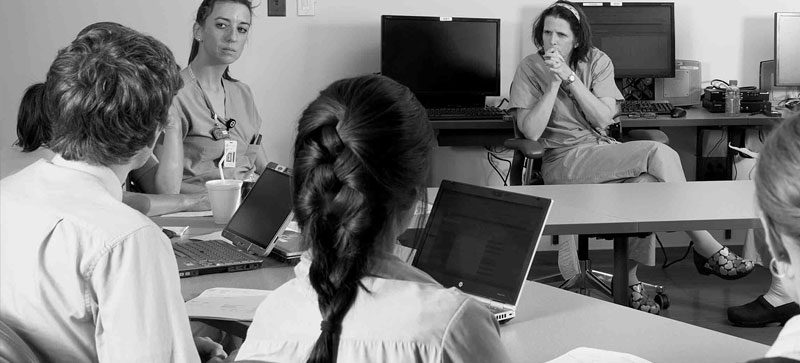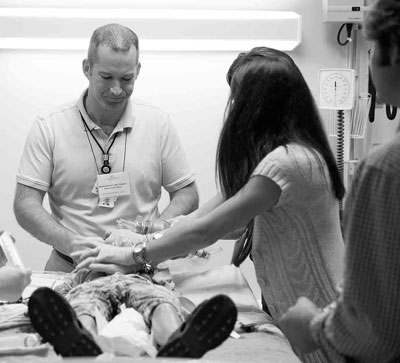The Burn Center: Modeling team based clinical care

Simulation team training is essential, but it only goes so far,” says Wayne Samuelson, M.D., professor (clinical) of medicine and vice dean for education for the School of Medicine. “The more important step is getting students to work together comfortably on a real person who’s really sick.”
That’s exactly the kind of training that students receive when they rotate through the University of Utah Hospital’s Burn Center, which annually cares for more than 300 pediatric and adult acute burn patients from throughout the Intermountain West. Because of the intensity and complexity of their wounds, patients often remain on the unit for months before they’re ready physically, psychologically, emotionally and logistically to return home.
The collaborative care the center provides each patient is essentially unheard of on other units. A team of physicians, behavioral health specialists, nurses, cases managers, physical therapists, dietitians and pharmacists meet daily to round on each patient (pictured below). It requires a chunk of time and a steadfast commitment from every staff member. “It’s not easy, but we take the long view,” says trauma and burn surgeon Amalia Cochran, M.D., associate professor of surgery. “We know that the time we spend coordinating a patient’s care today will be worth its weight in gold a month from now, when we’re ready to discharge that patient.”
Crisis intervention specialist Kristen Quinn, L.C.M.H.C., C.C.L.S., says team rounding is invaluable to understanding a patient’s worldview and personalizing their care. “It takes an entire team to explain a complex treatment plan to a patient and family members,” says Quinn.
The challenge is how to extend the remarkably coordinated care in the Burn Center to other units that have less acute patients and fewer resources from which to draw. Cochran agrees that it’s a difficult problem, but one worth solving. “If we viewed care from a systems perspective, ER visits would go down, patient satisfaction would go up and the cost of care could be reduced.”
She also believes the system will slowly start to shift on its own. “Boomers are retiring, and Gen X, Gen Y and Millennials are naturally more collaborative and much less lone-ranger,” says Cochran, who works extensively with students and residents. “They appreciate that teamwork is a better way to get things done and is the right thing to do for our patients.”



